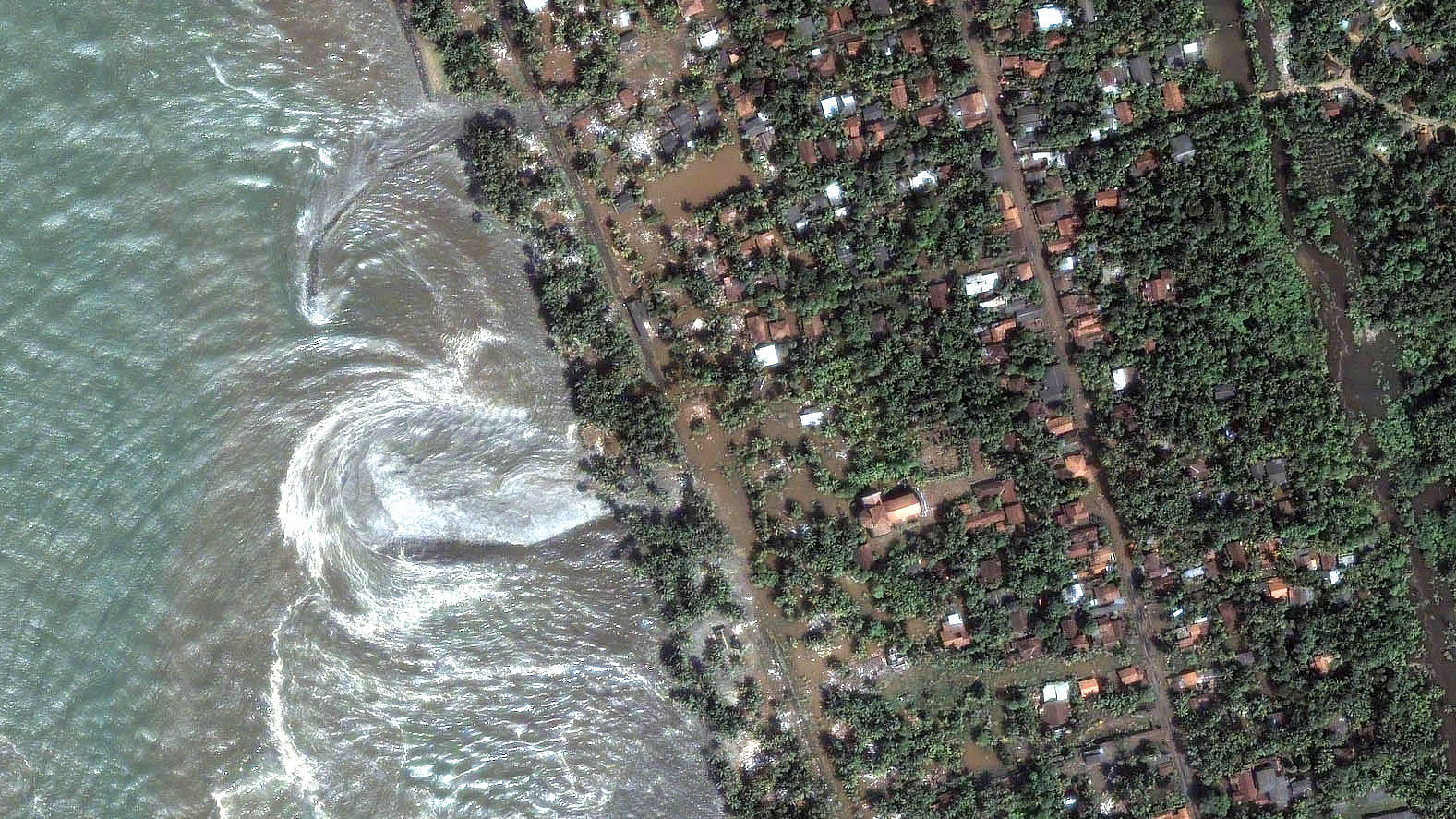Imagine huge waves nearly 10 stories high sweeping in from the sea toward land at the speed of a jet plane. This is what a tsunami looks like.
Tsunamis are giant waves caused by earthquakes or volcanic eruptions under the sea.
Unlike normal ocean waves, which are generated by wind, or tides, which are generated by the gravitational pull of the moon and the sun, a tsunami is generated by the displacement of water. When the ocean floor at a plate boundary rises or falls suddenly, it displaces the water above it and launches the rolling waves that become a tsunami.
Tsunamis sometimes reach heights of over 30.5 meters, which form a water wall that can cause widespread destruction when it crashes ashore. Also, tsunamis race across the sea at up to 805 kilometers an hour, at which they can cross the entire expanse of the Pacific Ocean in less than a day.

Tsunami in Kalutara, Sri Lanka, December 26, 2004. /VCG
Tsunami in Kalutara, Sri Lanka, December 26, 2004. /VCG
Is there any way of predicting a huge wave?
An earthquake is a natural tsunami warning. An earthquake can trigger killer waves thousands of miles across the ocean many hours after the event generated a tsunami.
A noticeable fall or rise in the water level is another warning. If you see the ocean receding unusually rapidly or far, it is a sign that a big wave is on its way.
It is also a good idea to be on the alert if an elephant on the beach suddenly starts trumpeting or running in the opposite direction to the sea because large animals like elephants can sense the vibrations created by such an earthquake earlier.

Tsunami in Miyagi, Japan, March 11, 2011. /VCG
Tsunami in Miyagi, Japan, March 11, 2011. /VCG

